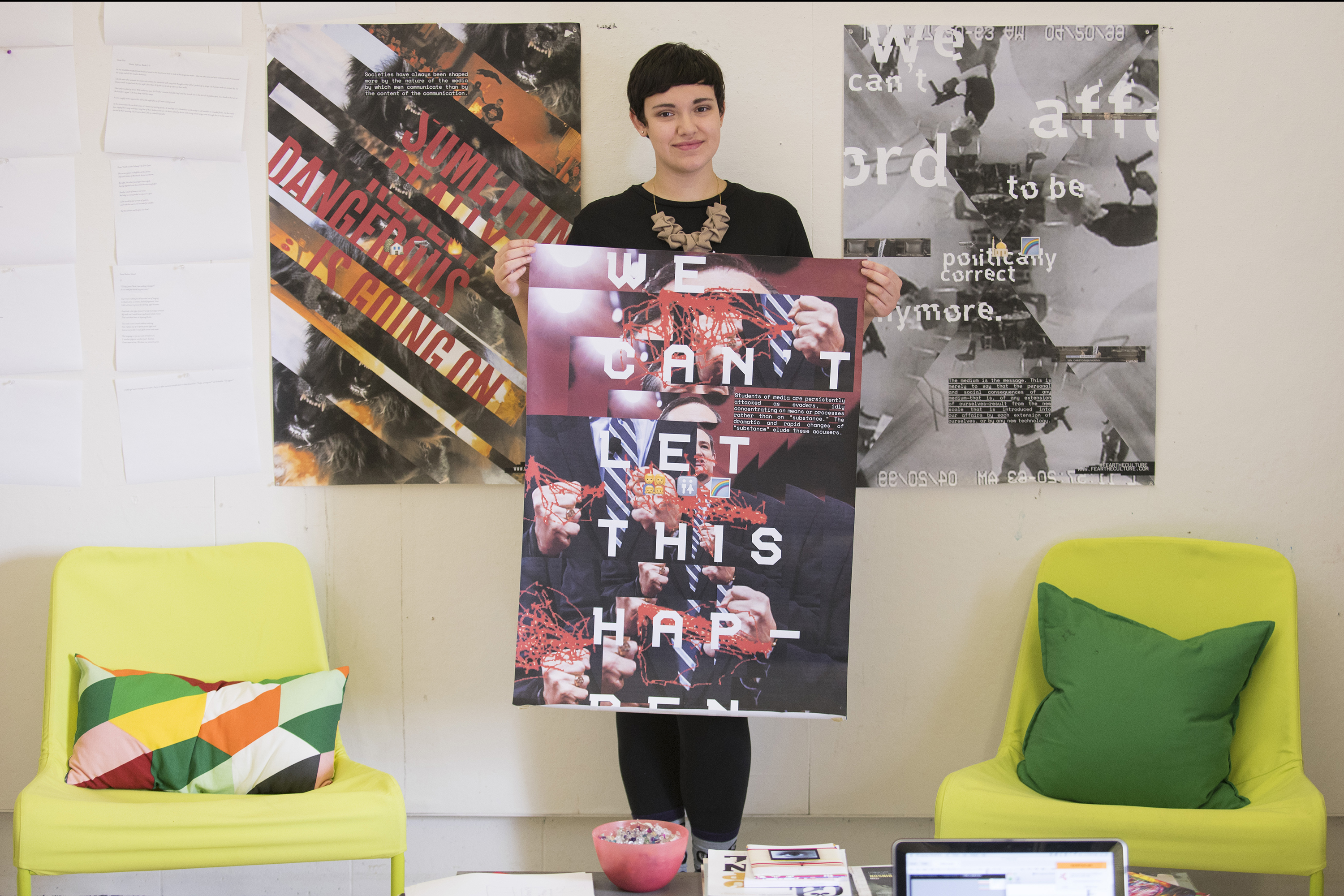Watching news coverage of the Orlando nightclub shootings earlier this year, graphic design student Raeanne Nuzzo ’17 (SFA) observed how the media often uses scapegoating to focus on an unidentified fear.
She noticed that in covering Orlando, some news organizations used photos from the 1999 Columbine High School shootings when 12 students and a teacher were killed. She read how the shock-rock musician Marilyn Manson was at the time mistakenly singled out in news reports as an influence on the two students responsible for the Columbine shootings.
As she thought about developing a proposal for an undergraduate IDEA grant, Nuzzo began to focus on fear culture.
“I was looking further into fear culture in general, and I got to Donald Trump and his language,” Nuzzo says of comments made the Republican candidate during the early part of the 2016 presidential campaign. “I read this fantastic New York Times article about how Trump’s language is extremely vague, and that he says a lot of things you can’t really disagree with. It plays into the natural fear that everyone feels. I did a lot of research reading headlines and looking at magazine covers.”
After earning a 2016 IDEA grant for her proposal, Nuzzo began to design a series of posters incorporating images and language from this year’s presidential election that are on display from Oct. 25 to Nov. 5 in the Arena Gallery of the Art Building, 337 Mansfield Road, just across from the Contemporary Art Galleries.
The UConn IDEA Grant program, launched in 2013, awards funding to support student-designed and student-led projects, including creative endeavors, community service initiatives, entrepreneurial ventures, research projects, and other original and innovative projects. Students from the School of Fine Arts have received 28 of the grants awarded.
Nuzzo’s poster exhibition will also include supplementary information from her research into fear culture, including details about the source of the images used, where the quotation incorporated into the design is from, and why she selected that statement.
“I could make one of these posters a day, just from what I was seeing on the morning news,” Nuzzo says. “I took my interest in how the media can steer people’s thoughts just on biased images, and found it’s far more widespread than I thought. For my project, I decided to dissect that and try to show the mechanics of it.”
She selected three comments Trump uses often during his campaign remarks: “We can’t afford to be politically correct anymore … We can’t let this happen … Something really dangerous is going on.” She then paired each Trump statement with an excerpt from Marshall McLuhan’s book “The Medium is the Message” – which he often punned as being pronounced “mess-age” – that was a follow-up to the media theorist’s landmark book “Understanding Media: The Extensions of Man.” The earlier book first focused attention on how a “medium” for communication is embedded in any message it would convey.
The posters also include the URL for a website feartheculture.com, where she hopes viewers will go to respond to the posters. There is also a social media hashtag #FEARTHECULTURE on each poster. Copies of the posters are being hung by friends on the streets of cities in California and New Mexico. Nuzzo is posting them in New Haven.
“The goal was to make it like a guerilla street art project,” she says. “The people putting posters up will take pictures and document where they put it. I’ll use the website metrics to track who visits and from where.”



